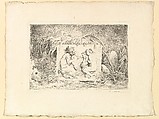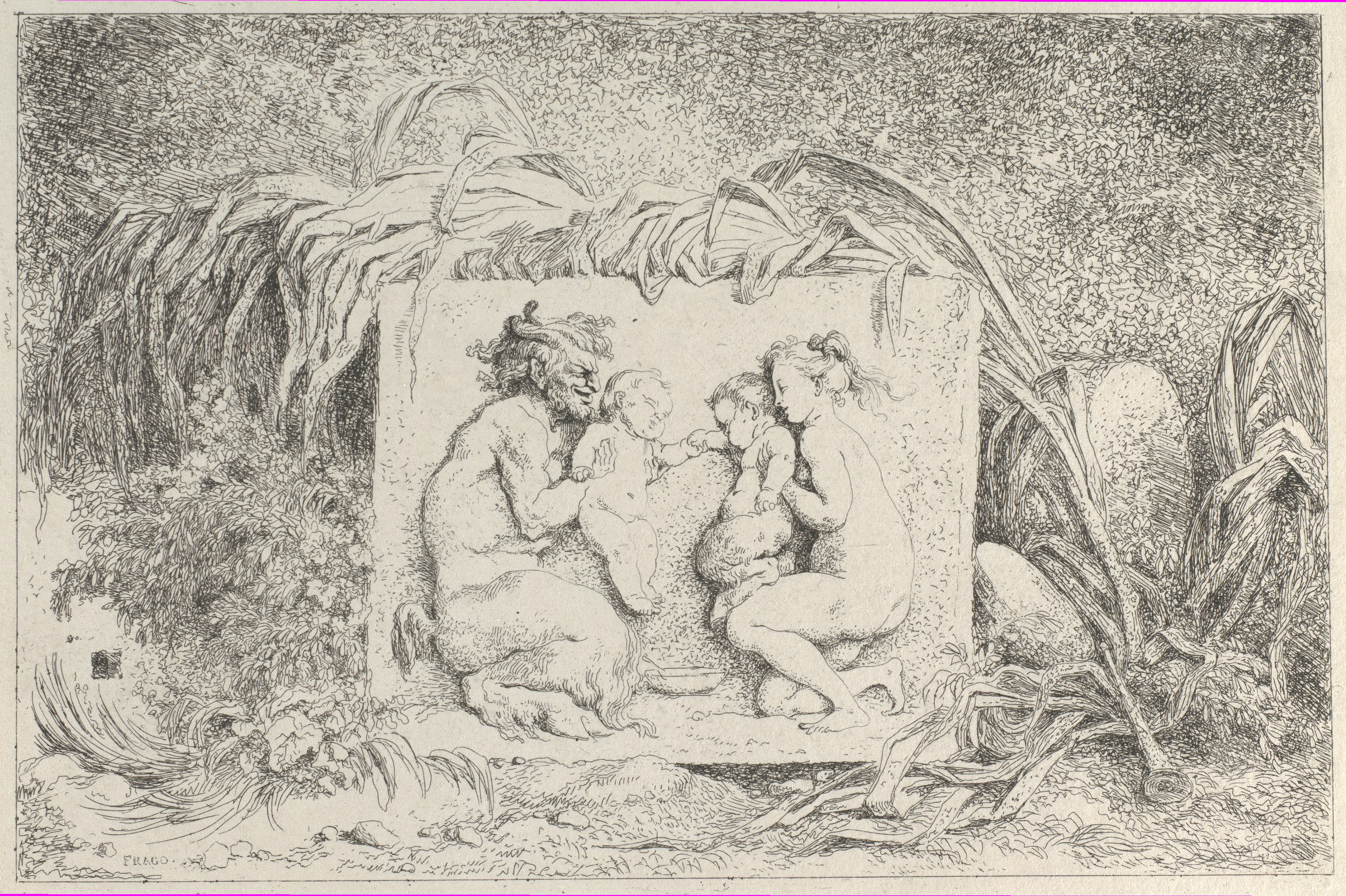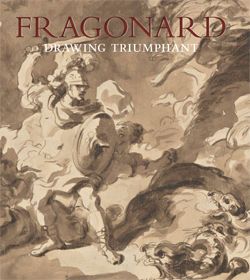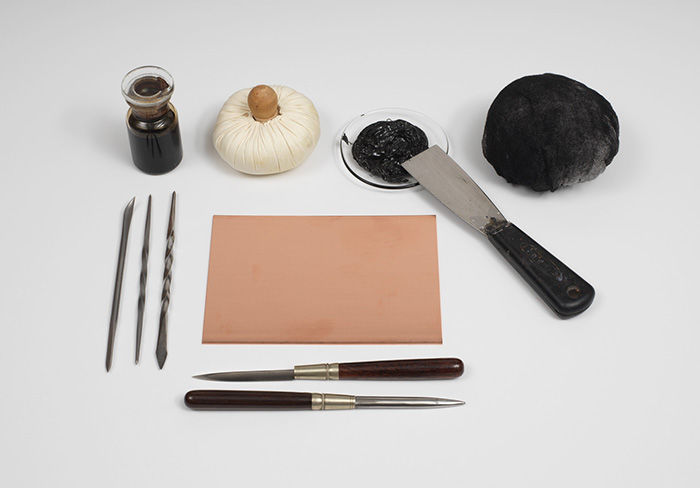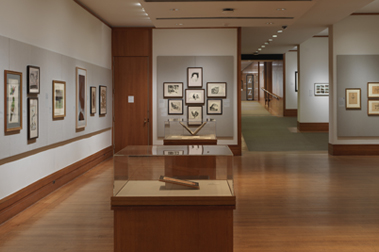The Satyr's Family
Jean Honoré Fragonard French
Not on view
Few painters in eighteenth-century France were formally trained in printmaking and, for the most part, they left the engraving of their work to professionals. Around 1763–64, Fragonard tried his hand at etching, ultimately producing a small oeuvre of under thirty prints, of which the four Bacchanals are among the most admired. His facility with the etching needle, which he treated as a drawing instrument, is breathtaking. Loosely inspired by antique motifs, the Bacchanals depict playful scenes of satyrs and nymphs in the form of reliefs set in shallow landscapes, framed by the fecundity of nature. In this whimsical scene, a satyr and nymph kneel facing one another, each holding a child resembling the other, perhaps a pair of fraternal twins.
This image cannot be enlarged, viewed at full screen, or downloaded.
This artwork is meant to be viewed from right to left. Scroll left to view more.
